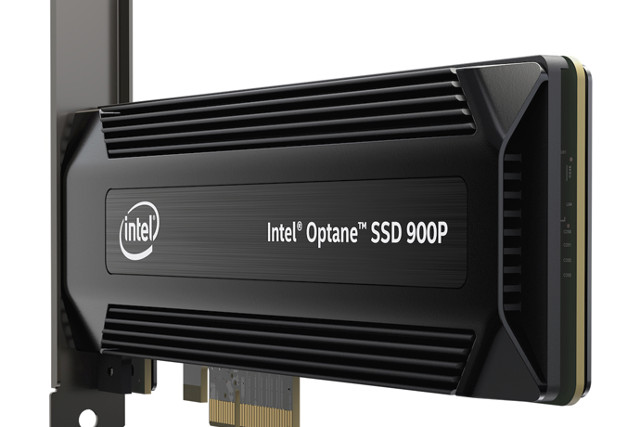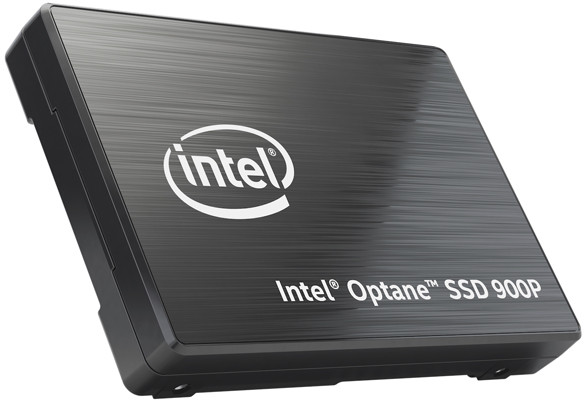Intel and Micron first unveiled 3D Xpoint technology (pronounced “crosspoint”) in 2015 with the promise of 1000x faster storage and 1000x better endurance than NAND flash used in SSDs. Performance was later reduced to about 7x better IOPS in a prototype, and Intel started to sell the technology under the Optane brand with the 375GB SSD DC P4800X for the enterprise market.
Since then Intel entered the consumer market with 16GB and 32GB Optane M.2 cards which are meant to be used as disk cache in compatible systems thanks to their high random I/O performance, and now the company has announced the first consumer grade 3D Xpoint SSDs for desktops and work stations with Optane 900P Series available in HHHL (CEM3.0) and U.2 15mm form factors, and with random I/O performance up to four times faster than competitive NAND-based SSDs.
Optane SSD 900P Series specifications:
- Capacity – 280 to 480 GB
- Interface – PCIe NVMe 3.0 x4
- Form Factor – HHHL (CEM3.0) or 2.5″ U.2 15mm
- Performance
- Sequential Read/Write – Up to 2500/2000 MB/s
- Random Read/Write – 550k/500k IOPS
- R/W Latency – 10μs
- Power Consumption – Active: 14W; idle: 5W
- Reliability / endurance
- MTBF – 1.6 million hours
- Endurance Rating – 8.76 PB written (480GB SSD); 5.11 PB written (280GB SSD)
- Uncorrectable Bit Error Rate (UBER) – 1 sector per 10^17 bits read
- Weight – HHHL: up to 230 grams; 2.5″ : up to 140 grams
Both 280 and 480GB models have the same performance and reliability characteristics, except for the endurance ratings, where obviously you can write more data on the large SSD before it wears out. With NAND based SSDs performance often scales with size, but it does not appear to be the case with 3D Xpoint SSDs.
Intel explains the Optane SSD are suitable for “demanding storage workloads, including 3D rendering, complex simulations, fast game load times and more”. Anandtech reviewed the 280GB model, and only recommends it for higher-end desktop computers for tasks where storage is too slow, or RAM is too small, but notes there aren’t that many of them on desktops.
While Optane memory (M.2 card) is only supported by some processors & motherboards right now, and the next generation of Intel processors and NUCs will all support Optane memory, except at the lower end of the scale with Gemini Lake processors, the Optane SSD 900P Series SSD should work with any PCIe/NVMe compatible host equipped with PCIe slot or U.2 connector.
Optane SSD 900P are pre-sold on Newegg for $389.99 (280GB) and $599.99 (480GB). You may find more details on Intel website.

Jean-Luc started CNX Software in 2010 as a part-time endeavor, before quitting his job as a software engineering manager, and starting to write daily news, and reviews full time later in 2011.
Support CNX Software! Donate via cryptocurrencies, become a Patron on Patreon, or purchase goods on Amazon or Aliexpress






